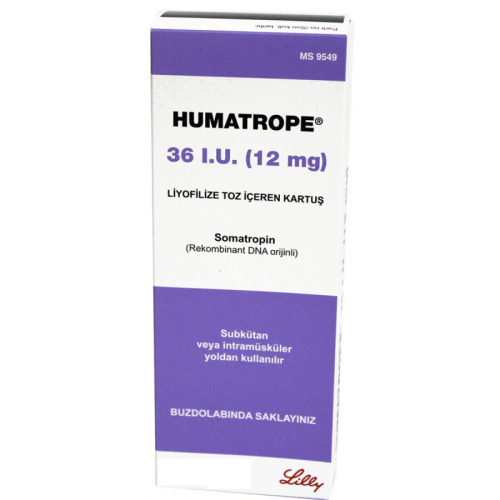Humatrope 36 IU (12MG)
- Brand: Lilly
- Product Code: Humatrope 36 IU (12MG)
- Availability: In Stock
-
$380.00
ACTIVE HALF-LIFE
2.5-3 hours
CLASSIFICATION
Peptide Hormone
DOSAGE
Men 4-10 IU/day
ACNE
No
WATER RETENTION
No
HBR
No
HEPATOTOXICITY
No
AROMATIZATION
No
MANUFACTURER
Lilly
WAREHOUSE
International Warehouse 2
SUBSTANCE
Somatropine - 191 Amino Acid
,
Human Growth Hormone (HGH), also referred to as somatotropin or somatropin, is a peptide hormone that promotes growth, cell reproduction, and regeneration in humans and other species. It acts as a type of mitogen that targets specific cell types. HGH is composed of a single-chain polypeptide consisting of 191 amino acids, produced, stored, and released by somatotropic cells in the lateral wings of the anterior pituitary gland. The secretion of Human Growth Hormone is influenced by various factors, including diet and physical activity.
HGH encourages body cells to increase in size and proliferate more rapidly than usual. It also facilitates the movement of amino acids across cell membranes and boosts the conversion rate of these molecules into proteins, thereby contributing to an anabolic effect that promotes muscle growth. Additionally, Human Growth Hormone can reduce the typical carbohydrate utilization rate in cells while simultaneously enhancing fat utilization. Research has shown that fat loss and gains in lean mass can occur with as little as 0.028 iu/kg of HGH daily over a period of 24 weeks. HGH also stimulates the production of IGF-1.
In the medical field, HGH is utilized to treat growth disorders in children and deficiencies in adults. Numerous studies demonstrate the following beneficial effects of regulated HGH levels:
Further studies, primarily involving individuals with HGH deficiency, suggest that HGH plays a vital role in mental and emotional wellness, as well as in sustaining high energy levels. Adults lacking HGH often report higher depression rates compared to those with normal levels.
Research has also explored HGH’s effects on cognitive functions, including learning and memory. It appears to support cognitive abilities in humans and may aid treatment for those with cognitive impairments due to HGH deficiency.
As an anabolic agent, HGH has been misused by athletes since at least 1982. While it can yield significant muscle and weight gains, it is not as effective in enhancing strength. Competitors from the '70s and '80s began to exhibit more defined muscle structures reminiscent of classical sculptures. These athletes likely did not supplement their routines with excessive cardio or increase their intake of lean proteins.
HGH tends to exhibit more pronounced positive effects when used in conjunction with a steroid cycle rather than on its own. Therefore, it is commonly regarded as suitable for cutting cycles aimed at achieving lean muscle and fat loss.

